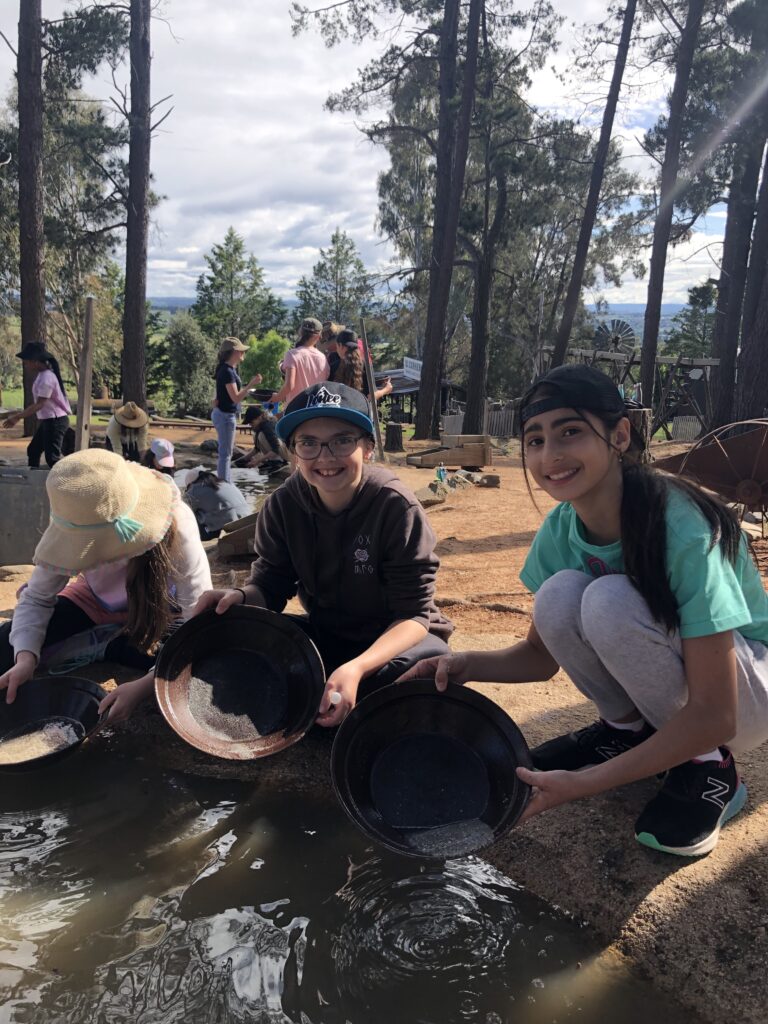Merrilynne Shaw, Primary Teacher
For History, Year 5 & 6 have been learning about Australia’s Gold Rush. If you’re a bit rusty on the details, Australia’s Gold Rush began in 1851 when Edward Hargraves and his mates discovered gold near Bathurst. This was not the first time gold was discovered in Australia, but it was the first time an Australian government would pay someone for gold, so the rush for quick riches began.
In the third week of this term, Stage 3 went on the Good as Gold Camp to Bathurst to be immersed in Gold Rush history. Here are what some students had to say:

I loved the Bathurst Camp, it was full of adventure and mystery.
Bethany, Year 5
After a bit, the bus stopped at our first destination. We arrived at Katoomba and had a big bush walk, we even got to see the Three Sisters. After all that walking, we hopped back on the bus. We were on our way to Bathurst. We arrived at our second stop, to eat some food and meet some new friends. Uncle Merv and Miss Sarah introduced themselves to us and then asked some people to put on a play. I was chosen to be Gregory Blaxland. The play was about how the area became Bathurst.
Summer, Year 6

An unusual thing I felt was that my bed was bouncy and small, but I slept in it anyway.
Ryder, Year 5

On our second day there, we went gold panning with Uncle Merv. I found eight specks of gold. Then we went inside a museum and Uncle Merv showed us lots of cool things from the time of the goldrush.
Faith, Year 5
I learnt how to throw a boomerang. There is a certain way as you must tilt your hand on an angle before you throw. There are different types of boomerangs too. One can break the legs of a kangaroo which Aboriginal people used so they could catch their food. The returning boomerangs were used to frighten animals out of hiding so they could be ambushed. Returning boomerangs were also used for sport. We got to paint our own boomerangs, but these are no good for throwing as they are for decoration purposes only.
Cara, Year 5

Learning about the living conditions in Colonial Australia and gold panning was terrific. I had never seen real gold before and that made it really special.
Penny, Year 6

My favourite part about the Bathurst Camp was the Mystery Walking Tour as we had to explore different sites of the city.
Tony, Year 6
For devotions, Mr H talked about the Greatest Treasure. The largest alluvial gold nugget they uncovered was called the Welcome Stranger. It was found in 1969 in Victoria, only 3 cm below the surface, near the base of a tree. It weighed 97.14 kg when it was removed from the ground and would be worth approximately $12 million today. Imagine finding it! Many of us would think that all our troubles were over. Like the Gold Rush of the 1800’s, many still seek earthly riches and forsake the greatest treasure of all – Jesus. Anything we can imagine on Earth is nothing when we compare it to God’s kingdom, not even the Welcome Stranger. God’s Kingdom is a treasure. When we follow Christ, the gift of eternal life exceeds anything of earthly value, and is worth everything we have.

